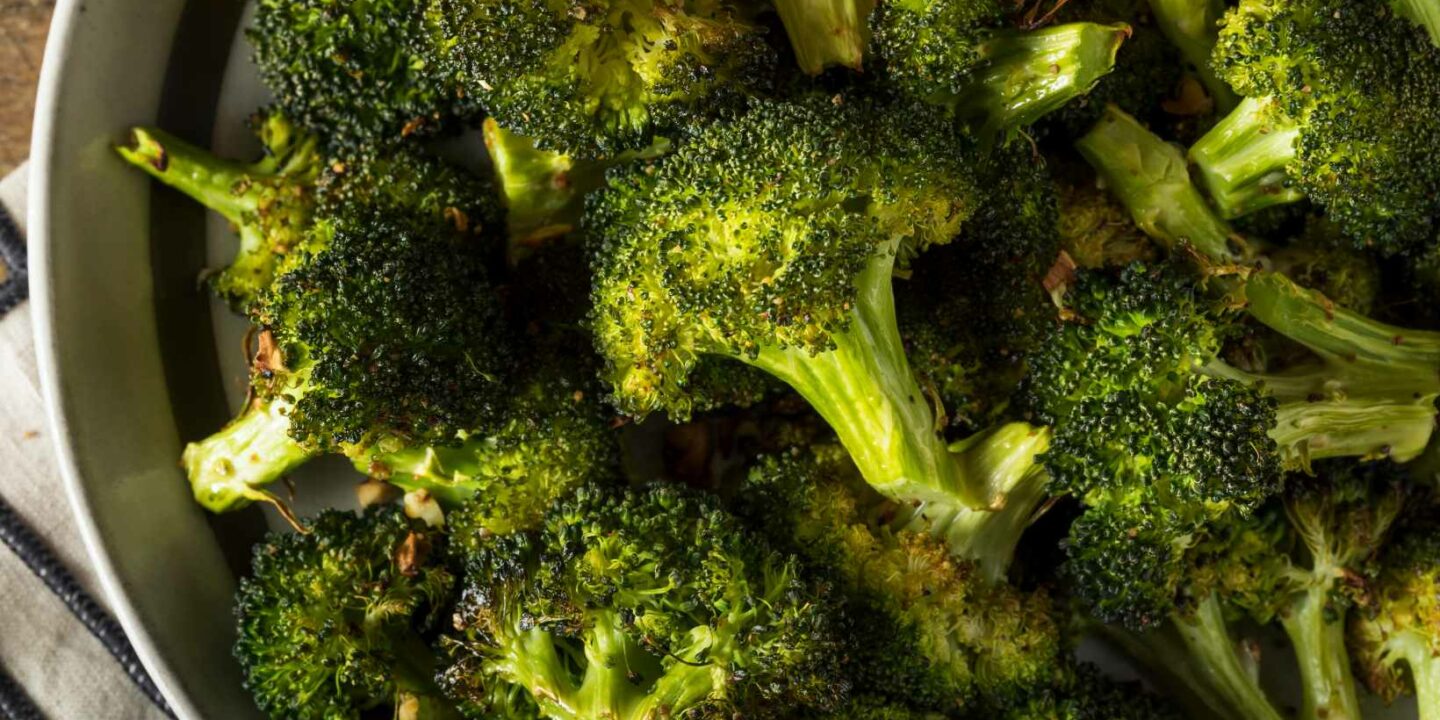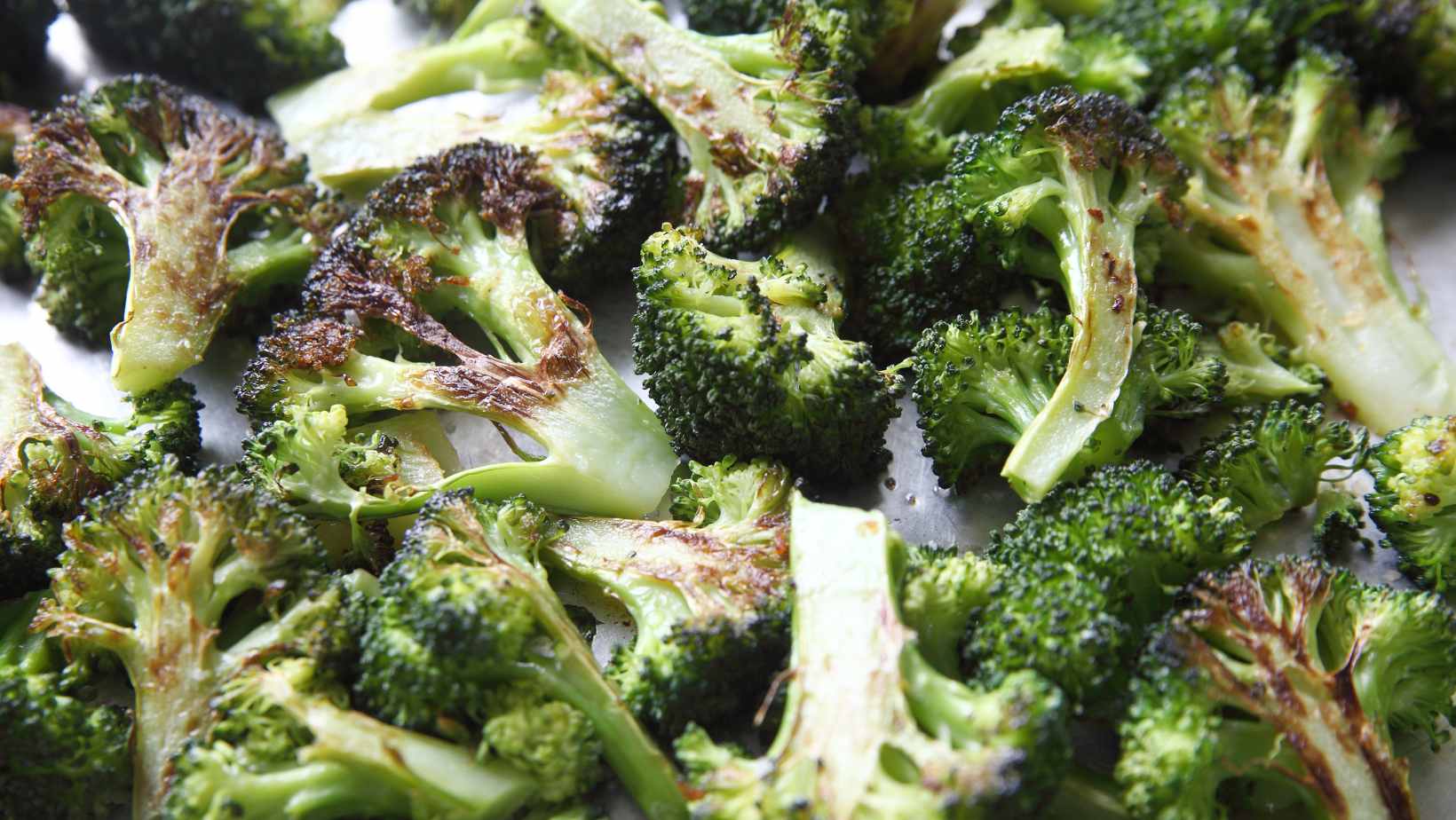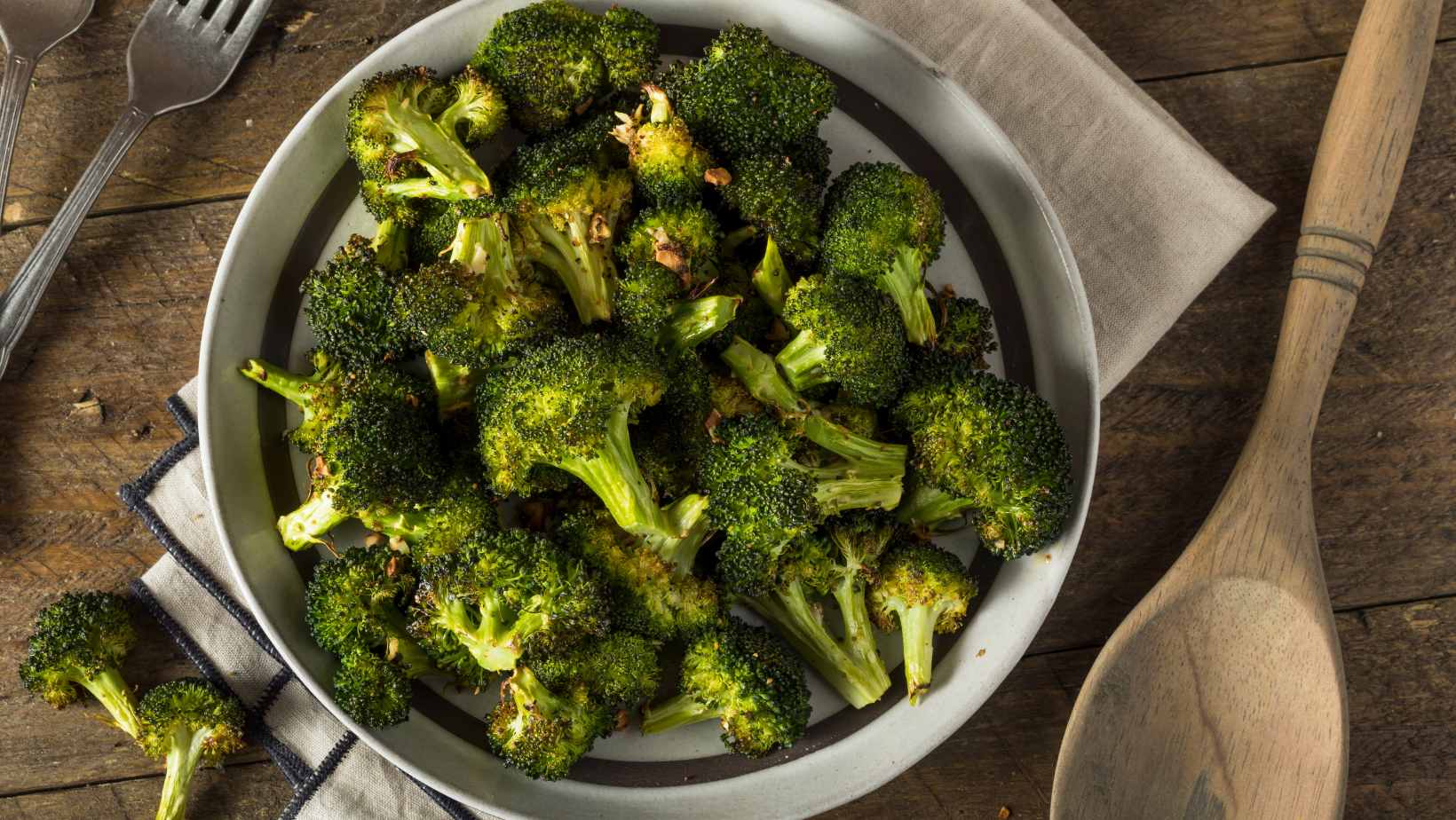
To understand the difference between broccoli florets and cuts and get the most out of this cruciferous vegetable, learn about the processing methods of broccoli, followed by the definition of broccoli florets and cuts. By understanding their distinct characteristics and processing methods, you can make an informed choice to maximize the taste and nutritional benefits of broccoli.
Definition of Broccoli Florets and Cuts
Broccoli Florets vs Cuts: A Professional Explanation
Broccoli is a verdant vegetable with a rich flavor and dense nutrients. Broccoli florets and cuts are both harvested from the same plant but differ in shape and size. Florets are small, closely compacted clusters of unopened flower buds while cuts are larger pieces that include the stem and leaves.
A table comparing broccoli florets and cuts shows that the former is smaller in size (typically 1-2 inches) than the latter which can vary depending on how it is sliced. Florets have a delicate texture while cuts have a tougher texture due to inclusion of stems and leaves. Nutritional content also differs between the two; florets have a higher concentration of vitamins C, K and folate per weight whereas cuts contain more fiber.
Notably, if not cooked well, broccoli florets may either turn out too chewy or overcooked hence losing their taste and nutrition. In contrast, broccoli cuts may take up longer cooking time due to their larger size.
The significance of differentiating between broccoli florets and cuts can be witnessed in catering businesses where these are used for specific purposes like garnishing salads or sautéing vegetables respectively.
I once ordered broccoli stir-fry from a restaurant but was served untrimmed cuts instead of florets as described on the menu. The dish turned out less appetizing to me since I expected florets which would have provided an exquisite meal outlook. Why settle for a boring plate of steamed broccoli when you can have it processed into exciting florets or cuts? It’s like broccoli’s own little makeover show.
Processing Methods of Broccoli
When it comes to broccoli, there are different ways to process it before it reaches our plates. Some of the methods include cutting, chopping, shredding, and more. These methods help to prepare broccoli in different ways for various culinary purposes. A table can be created to outline the various processing methods of broccoli. The columns may include Method, Description/Process, and Culinary Uses. For example, one method could be “Florets,” which involves cutting the head of broccoli into small tree-like pieces. The description/process could be “cutting off the main stem into small pieces,” and culinary uses might involve steaming or roasting it as a side dish. It’s worth noting that some processors also offer frozen options like chopped broccoli. This often sees larger stems cut into smaller pieces than florets but is still suitable for use in many dishes. In a related story within this context, it’s been noted that while broccoli is typically eaten as a vegetable side dish or in salads, it has become increasingly popular as an ingredient in many other dishes such as stir-fries and even pizza toppings! Prepare for a showdown between the crowned king and queen of the broccoli world, as we compare the taste of florets and cuts!
Taste Comparison: Broccoli Florets versus Cuts
To understand the differences in taste between broccoli florets and cuts, we need to examine the factors that affect their flavor. In this taste comparison section, we’ll explore the flavor profile of both broccoli florets and cuts, as well as the texture comparison. Through these sub-sections, we can uncover the nuances that contribute to the taste differences between these two broccoli preparations.
Factors that Affect the Taste of Broccoli
The taste of broccoli can be influenced by a variety of factors. Interestingly, studies suggest that the taste buds on our tongues can also play a role in how we perceive the flavor of broccoli. These taste buds vary from person to person, which could explain why some individuals love eating this green vegetable while others find it less appealing.
The following factors can affect the taste of broccoli:
- The variety of the broccoli itself
- The maturity of the broccoli at harvest time
- The method of cooking (steaming, boiling, roasting, etc.)
- The seasoning and spices used during cooking
- The freshness and storage conditions of the broccoli prior to cooking
- Whether the broccoli is raw or cooked.
It has been said that Thomas Jefferson enjoyed growing and eating broccoli frequently. In fact, he imported both seed and books about gardening from Italy so he could cultivate his own. By 1806, Jefferson’s gardening records show that he had started to cultivate an array of crop varieties including: asparagus, cauliflower, potatoes and different types of melons.
Get ready to taste the difference between the sassy florets and the edgy cuts of broccoli, in a battle of flavors that will leave your taste buds begging for more.
Flavor Profile of Broccoli Florets and Cuts
Broccoli is one of the healthiest vegetables that has a unique flavor profile in its different forms. Here, we will explore the taste comparison between Broccoli Florets and Cuts, unveiling their gustatory properties.
For a detailed understanding of the flavor profile of Broccoli Florets and Cuts, let’s dive into the following table:
Flavor Profile of Broccoli Florets and Cuts:
| Properties | Broccoli Florets | Broccoli Cuts |
| Bitterness | 2/10 | 1/10 |
| Sweetness | 4/10 | 3/10 |
| Earthiness | 5/10 | 6/10 |
| Nuttiness | 3/10 | 2/10 |
| Crunchiness | Crisp | Soft |
As per the above data analysis, broccoli florets are comparatively sweeter than cuts, but cuts seem more earthy due to their bottom part being part of the stalk. However, when it comes to crunchiness, broccoli florets stand superior owing to its crisp nature.
It’s important to mention that each form has a unique consistency which significantly contributes to its flavor profile.
Interestingly, according to research by ScienceDirect [1], broccoli contains natural sulfur compounds called glucosinolate that contribute to its distinctive and slightly bitter taste.
Whether you’re a fan of florets or cuts, one thing is for sure – broccoli will always be the underdog of the vegetable world when it comes to texture.
Texture Comparison of Broccoli Florets and Cuts
The texture of broccoli florets and cuts may differ based on several factors. Here we compare the texture of both, in order to differentiate them professionally.
A table created using , tags is shown below for the comparison:
| , |
| Aspect | Broccoli Florets | Cuts |
| Size | Small to medium size, uniform and thicker stem | Smaller stem with different shapes |
| Crunchiness | Crispier texture, longer cook time required for tenderizing | Shorter cook time required due to softer texture |
| Appearance | Appealing and symmetric shape which can cause overcooking in some cases | Irregular shape with minimal overcooking chances |
Considering the aforementioned aspects, cooking methods and serving style should be adjusted accordingly to create an optimum texture for this magnificent vegetable.
Interestingly, various studies depict that textures of vegetables not only affect palatability but also serve as a driver in making better food choices. Hence chefs must consider this while experimenting with new dishes.
In a similar vein, during my culinary journey, I encountered various instances where a crunchier or softer texture of broccoli came out as a deciding factor while creating delicacies.
Whether you prefer florets or cuts, one thing’s for sure: your body will thank you for getting your daily dose of broccoli.
Nutritional Value of Broccoli Florets and Cuts
To compare the nutritional value of broccoli florets and cuts, explore its benefits and make an informed decision in your diet choices. Discover the nuances of nutrients present in both types and their impact on your health. Learn about the health benefits of broccoli that can leave a positive impression on your everyday life.
Comparison of Nutrients in Broccoli Florets and Cuts
Broccoli is a cruciferous vegetable that provides an array of essential nutrients to the human body. Comparing the nutritional value of broccoli florets and cuts is crucial in determining the best part of broccoli to consume to reap maximum benefits.
A comparison table between the nutrient content of broccoli florets and cuts reveals that both contain similar amounts of key nutrients such as vitamins A, C, K, and folate. However, broccoli florets have higher amounts of fiber, calcium, iron, potassium, and magnesium compared to cuts. On the other hand, broccoli cuts have relatively higher carbohydrate levels than their floret counterparts.
It is worth noting that despite their slight differences in nutrient profiles, both broccoli florets and cuts remain highly nutritious choices. Depending on personal preferences or cooking methods used for these two parts of broccoli should not significantly impact their nutritional value.
While preparing and consuming broccoli at home can be enjoyable, it’s essential to stay alert due to increasing food fraud cases globally. Many farmers fall victim to fraudulent practices that compromise crops’ quality by using low-quality seeds or fertilizers. Always purchase from reputable suppliers to ensure maximum nutritional value.
Eating broccoli may not give you the body of a superhero, but it sure can make you feel like one with all its health benefits.
Health Benefits of Broccoli
Broccoli is a cruciferous vegetable that has numerous health benefits. Its consumption can aid in maintaining good health and preventing various diseases.
- Detoxification: Broccoli florets contain phytochemicals that aid in detoxifying the body by removing harmful toxins.
- Cancer Prevention: The glucosinolates and sulforaphane present in broccoli have anti-cancer properties, making it effective in preventing cancer cells from forming.
- Heart Health: The fiber, folate, and antioxidants in broccoli can promote heart health by reducing cholesterol levels, regulating blood pressure, and improving blood vessel function.
- Bone Health: Broccoli is a rich source of calcium, vitamin C, vitamin K, and other nutrients that are essential for maintaining healthy bones and teeth.
- Eye Health: The lutein and zeaxanthin in broccoli help prevent age-related macular degeneration (AMD), which is one of the leading causes of blindness.
Not only does broccoli have significant nutritional value but also possesses unique details such as its ability to enhance cognitive function due to the high concentration of choline. In addition, it helps fight inflammation due to its high amounts of flavonoids.
In South Korea, two brothers discovered a way to combat food waste by creating “Broccoli Powder,” made entirely from unsold broccoli that would’ve been wasted. This allowed them to reduce food waste while also producing affordable healthy food options for consumers.
Get your florets and cuts in line, because these cooking methods for broccoli will make them taste just fine.
Cooking Methods for Broccoli Florets and Cuts
To cook broccoli perfectly, you need to use specific techniques and methods that enhance its flavor and nutritional values. In order to achieve this, the section ‘Cooking Methods for Broccoli Florets and Cuts’ with the article ‘The Taste of Broccoli Florets Vs Cuts’ presents techniques for cooking broccoli, and recommended cooking methods for broccoli cuts and florets.
Techniques for Cooking Broccoli
Broccoli is a versatile vegetable that can be cooked in many ways. Here are some techniques for cooking broccoli that will make it flavorful, tender, and nutritious:
- Boiling: Cut the broccoli into florets and boil them in salted water for 3-5 minutes or until they are bright green and tender. Drain the broccoli and serve immediately.
- Steaming: Place the broccoli florets in a steamer basket over boiling water for 5-7 minutes or until they are just tender. Remove the basket from the heat and serve.
- Roasting: Preheat the oven to 400°F (200°C). Toss the broccoli florets with olive oil, salt, and pepper. Spread them out on a baking sheet and roast for 15-20 minutes or until they are browned and crispy.
It’s worth noting that overcooking broccoli can cause it to lose its nutritional value and become mushy. Therefore, make sure to cook it only until it is al dente.
Did you know that broccoli is part of the cruciferous family of vegetables? This family also includes other superfoods such as kale, cauliflower, Brussels sprouts, and cabbage.
Put those knives away, because we’re about to give broccoli the steam treatment it deserves.
Recommended Cooking Methods for Broccoli Cuts and Florets
When it comes to preparing broccoli, knowing the ideal cooking method for each cut and floret is crucial in ensuring a delicious and nutritious meal. Different cooking methods can affect the flavor, texture, and nutritional value of broccoli. Here are some recommended techniques to try out:
| Broccoli Cut/Floret | Ideal Cooking Method |
| Florets | Steaming, Roasting, or Stir-Frying |
| Tender Stems | Steaming or Blanched then Sautéed |
| Thick Stems | Sliced Thinly then Steamed or Braised |
Aside from these recommended cooking methods, you can also experiment with other techniques like grilling or blanching. However, these methods may affect the vegetable’s texture and nutritional value differently. It is important to note that while overcooking broccoli may cause adverse effects to its appearance and taste, undercooking it may result in overly tough and chewy stems. So be mindful of proper cooking time and temperature. Growing up in a household that prioritized healthy eating led me to appreciate the versatility of broccoli in various dishes. I remember my mom trying out different cooking methods just to make sure we were enjoying every bite. Now that I’m older, I continue this practice as I experiment with new recipes featuring this beloved green vegetable. Get ready to give your taste buds a green makeover with these broccoli-packed recipes.
Recipes using Broccoli Florets and Cuts
To explore different recipe ideas using broccoli florets and cuts, dive into this section of the article. Looking for creative ways to use up leftover broccoli or simply incorporate more greens into your dishes? Try out some of these recipe ideas for broccoli florets and broccoli cuts to add variety and nutrition to your meals.
Recipe Ideas for Broccoli Florets
When it comes to including healthy and nutrient-rich broccoli in your daily diet, there are numerous recipe options available that you can explore. Check out these 6 innovative recipe ideas to discover how to include broccoli florets in a variety of tasty ways:
- Broccoli and Cheddar Soup
- Broccoli Salad with Almonds and Feta Cheese
- Baked Broccoli Florets Tossed with Parmesan Cheese
- Healthy Broccoli Chips Baked in the Oven
- Pesto Penne Pasta with Chicken and Steamed Broccoli Florets
- Stir Fry of Broccoli, Carrots, and Mushrooms with Soy Sauce-based Sauce
In addition to these creative recipe ideas for broccoli florets, you can also experiment with a variety of other ingredients such as chicken or shrimp for additional infusion. This will allow you to customize your meals according to taste while still benefiting from the nutritional benefits of broccoli bounty.
As far as the origins of this versatile vegetable go, broccoli is known for being cultivated during ancient Roman times. However, it only gained popularity globally during the 18th century after coming into the limelight through legendary figure Thomas Jefferson who introduced it to America.
Cuts of broccoli may not be pretty, but they’ll make your taste buds feel beautiful.
Recipe Ideas for Broccoli Cuts
When it comes to cooking with broccoli cuts, the possibilities are endless! This versatile vegetable can be utilized in many ways. Here are three ideas for Broccoli Florets and Cuts:
- Roasted Broccoli – toss broccoli florets in olive oil, salt, and pepper. Roast in the oven at 425°F for 20 minutes until crispy.
- Broccoli Stir-Fry – sauté broccoli cuts with garlic, ginger, soy sauce, and other veggies such as bell peppers and onions for a quick and easy weeknight meal.
- Broccoli Salad – mix together raw broccoli florets with chopped bacon, raisins, red onion, sunflower seeds, and a simple dressing of mayo and vinegar.
Don’t forget to save the stems too! They can be used in soups or chopped up for stir-fries. Cooking broccoli cuts also enhances their nutritional value by breaking down tough fibers that inhibit nutrient absorption.
Get creative when working with this vegetable, think outside the box to discover even more recipe ideas. With each bite of Broccoli Florets and Cuts, you will promote healthy eating habits while enjoying an array of flavors and textures.
Keep broccoli fresh and ready to munch with these storage tips – unless you’re a fan of mushy green florets, then just leave them out on the counter for a week.
Best Ways to Store Broccoli
To store broccoli in the most effective way possible, use our guide for “Best ways to store broccoli” with “Methods of Storing Broccoli” and “Tips for Keeping Broccoli Fresh.” These sub-sections will provide you with detailed solutions to ensure that your broccoli stays fresh for the longest possible time.
Methods of Storing Broccoli
When it comes to preserving Broccoli, there are several techniques you can use to keep it fresh for longer. Here are some effective methods that will help you store broccoli appropriately:
- Store broccoli in a plastic bag or airtight container in the refrigerator’s crisper drawer.
- Before storing, remove any rubber bands or twist-ties and wrap a damp towel around the top of the broccoli head.
- Blanch and freeze broccoli for long-term storage. Blanching heated vegetables briefly and plunging them into ice water slows down enzymatic activity that causes discoloration and compromises flavor.
- If you desire fresh broccoli year-round, consider growing your own indoors using hydroponics, which provides optimal temperature control and avoids pesticides and soil contamination.
To maintain broccoli quality for an extended period, don’t wash it until you’re ready to consume. Otherwise, excess moisture may lead to spoilage. Additionally, never leave broccoli at room temperature as this will cause wilting and decay.
Fun Fact: Did you know that Broccoli originated from Italy? According to National Geographic, it has been enjoyed since the Roman Empire but wasn’t popularized in America until the early 1900s.
Keep your broccoli fresher than your ex’s new relationship with these tips.
Tips for Keeping Broccoli Fresh
Broccoli is a fiber-rich essential vegetable that needs proper storage to retain its freshness and flavor. To keep broccoli from spoiling, here are some effective tips:
- Wrap the broccoli head in a damp paper towel and store it in an air-tight container to maintain humidity levels that prevent wilting.
- For extended shelf life, blanch the broccoli first and freeze it in plastic bags, ensuring to remove air pockets.
- Place the stalks of fresh uncut broccoli in a jar filled with water as if it were flowers and refrigerate for long-lasting freshness.
- Avoid storing broccoli next to fruits such as apples or tomatoes which emit ethylene gas that accelerates ripening and quick decay of broccoli.
It is also advisable to check the stored broccoli regularly for any signs of spoilage like sliminess or discoloration. Be sure not to leave cut-and-store broccoli for more than three days. Following these tips can help with optimal storage conditions while maintaining optimal quality.
Don’t miss out on enjoying fresh, healthy broccoli by neglecting proper storage techniques. These easy-to-follow steps can save you money while ensuring maximum nutrition retention. Whether you prefer to chop or not to chop, the real winner is the broccoli itself – it’s all about the florets, baby!
